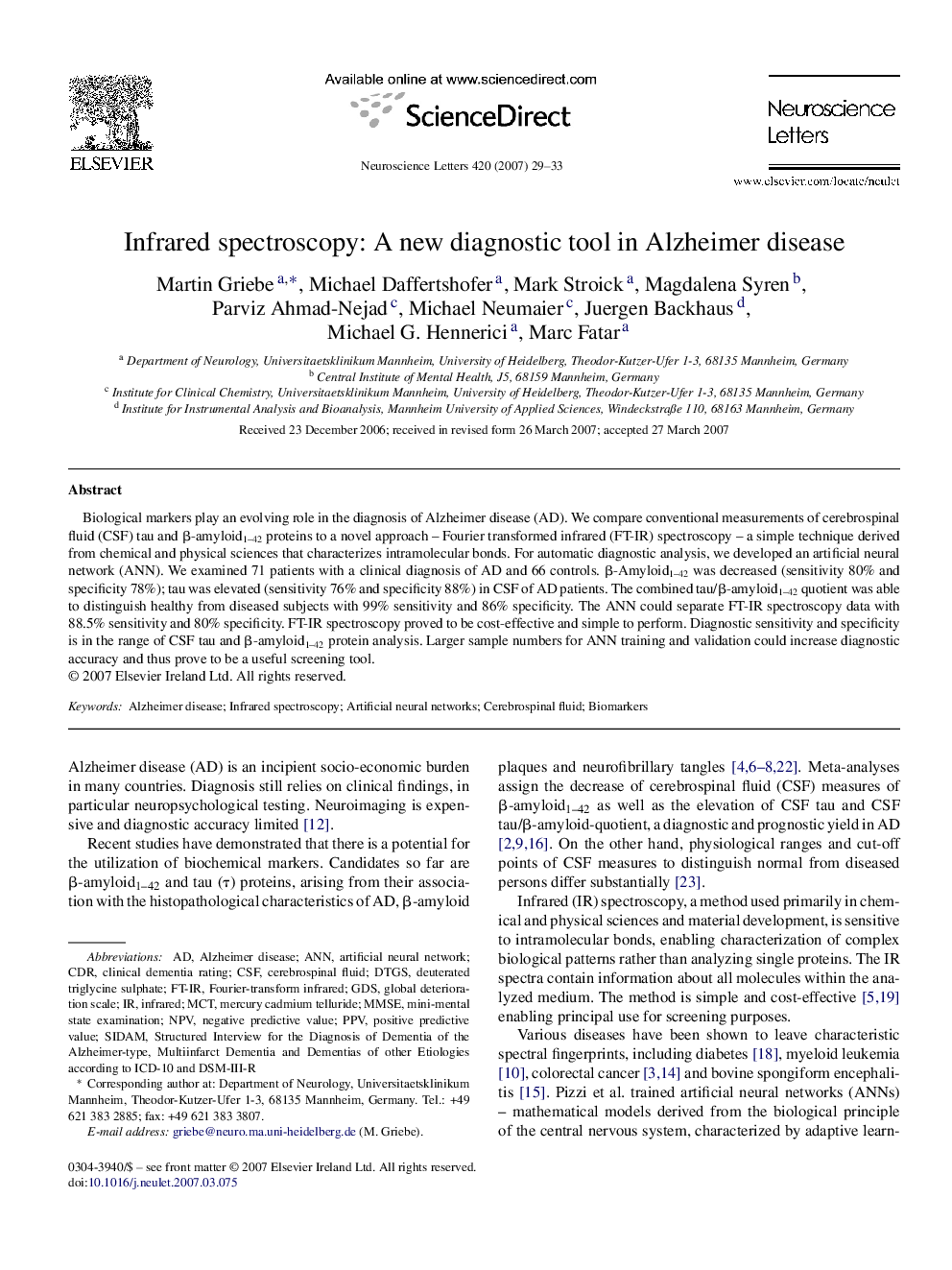| Article ID | Journal | Published Year | Pages | File Type |
|---|---|---|---|---|
| 4349500 | Neuroscience Letters | 2007 | 5 Pages |
Biological markers play an evolving role in the diagnosis of Alzheimer disease (AD). We compare conventional measurements of cerebrospinal fluid (CSF) tau and β-amyloid1–42 proteins to a novel approach – Fourier transformed infrared (FT-IR) spectroscopy – a simple technique derived from chemical and physical sciences that characterizes intramolecular bonds. For automatic diagnostic analysis, we developed an artificial neural network (ANN). We examined 71 patients with a clinical diagnosis of AD and 66 controls. β-Amyloid1–42 was decreased (sensitivity 80% and specificity 78%); tau was elevated (sensitivity 76% and specificity 88%) in CSF of AD patients. The combined tau/β-amyloid1–42 quotient was able to distinguish healthy from diseased subjects with 99% sensitivity and 86% specificity. The ANN could separate FT-IR spectroscopy data with 88.5% sensitivity and 80% specificity. FT-IR spectroscopy proved to be cost-effective and simple to perform. Diagnostic sensitivity and specificity is in the range of CSF tau and β-amyloid1–42 protein analysis. Larger sample numbers for ANN training and validation could increase diagnostic accuracy and thus prove to be a useful screening tool.
